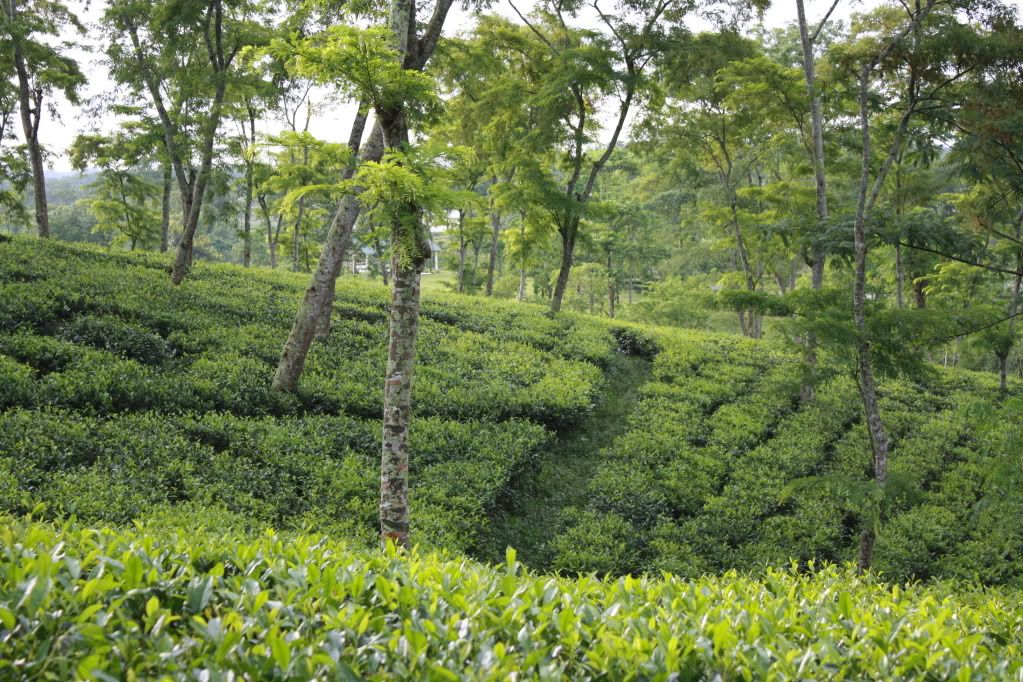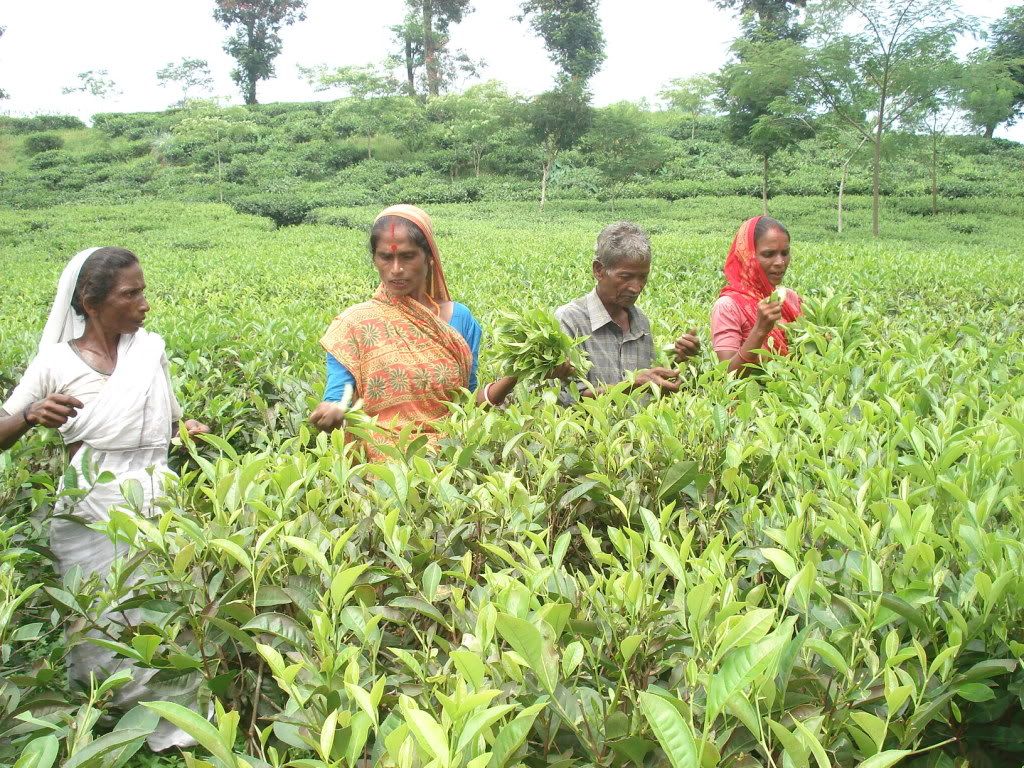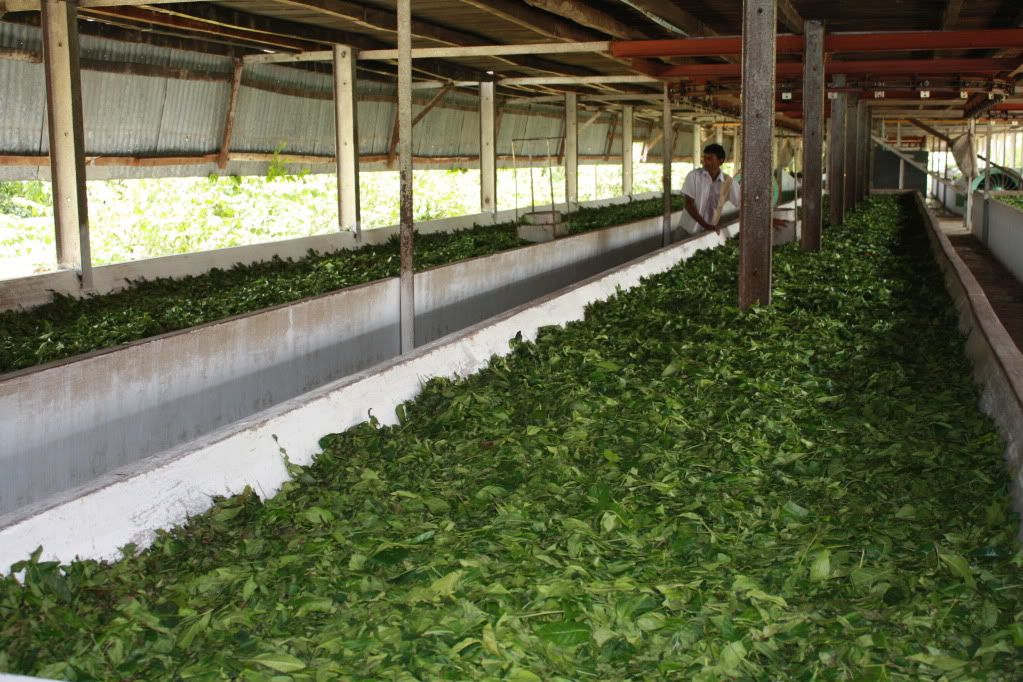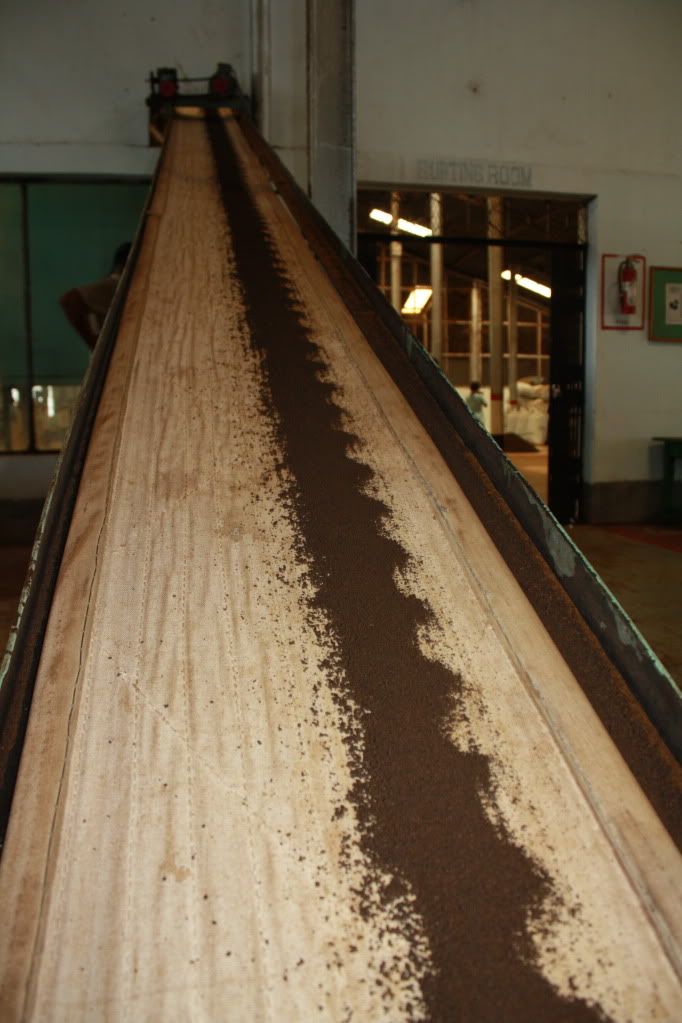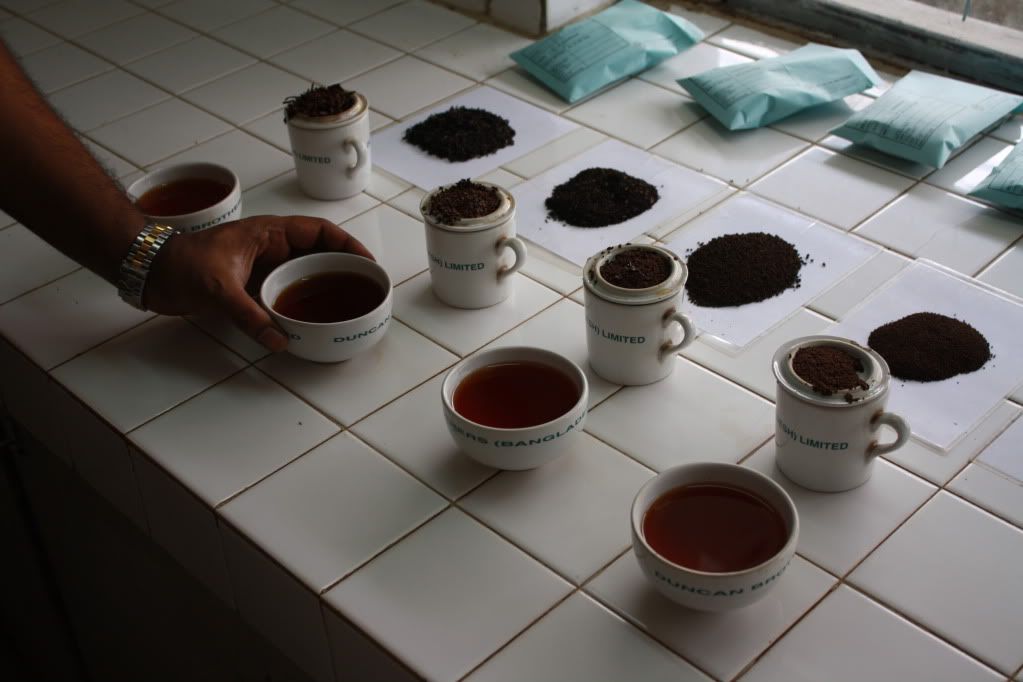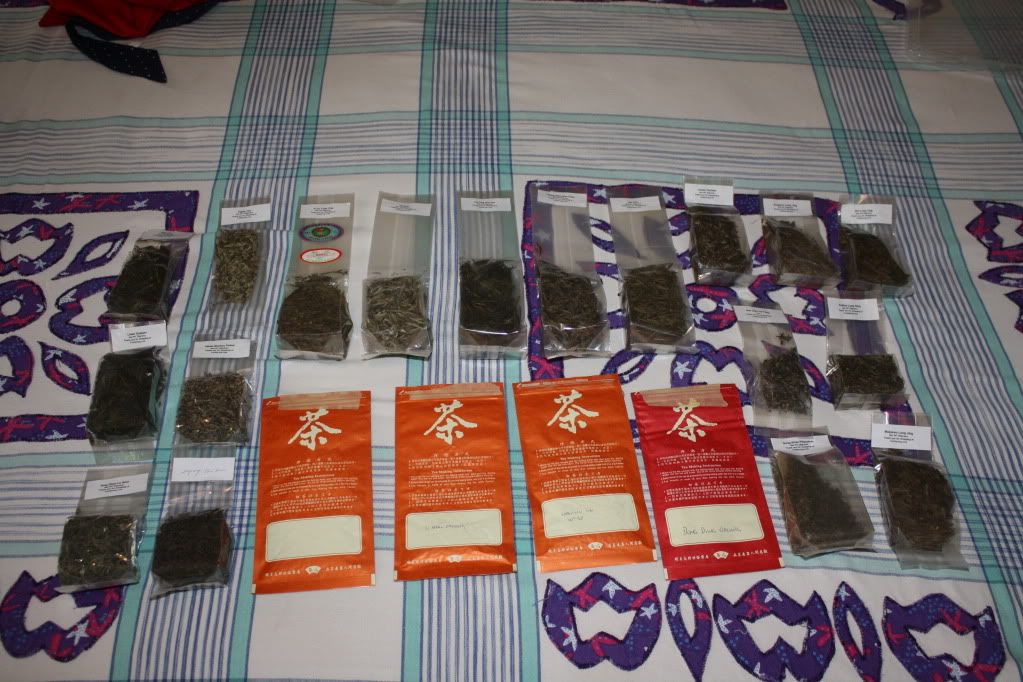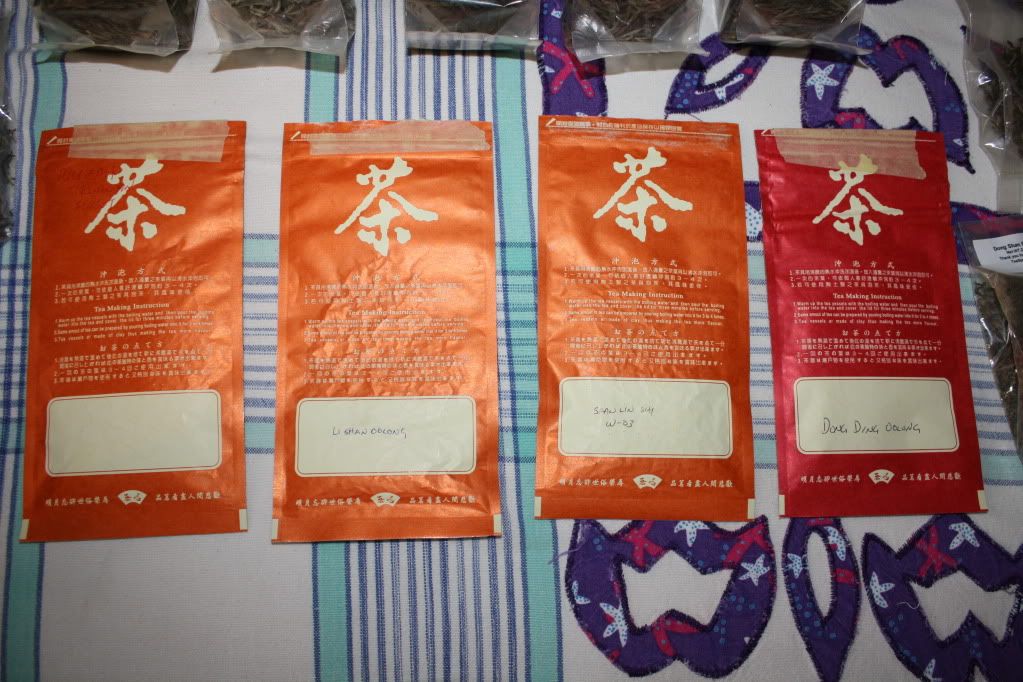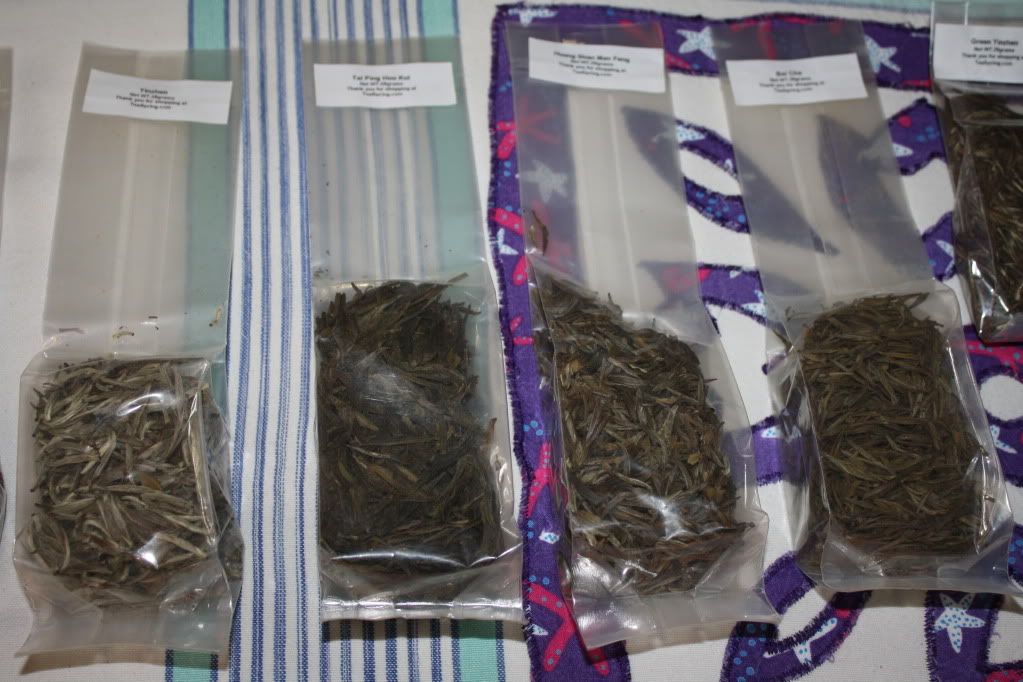Tea
Comments
-
 Andrew Dzikoski BlogAdministrator, Everyone, ForumsAdministrator, Moderator, Owners, Registered Users, Trusted Users Posts: 338You can grow your own tea. Find some seeds for camellia sinensis I had some growing for a while its really interesting to know you made it and it can be alot safer as tea can have a very high content of fluroide which can be bad for thyroid. you can make green, red or black tea from the leaves depending on the way you handle the leaves after picking. I do suggest seeing if you can find a live cutting though the seeds can be a major pain to get goin. They like a sandy and loose mix with good drainage and decent sun light can take a year or 2 till you can really get good leaves.0
Andrew Dzikoski BlogAdministrator, Everyone, ForumsAdministrator, Moderator, Owners, Registered Users, Trusted Users Posts: 338You can grow your own tea. Find some seeds for camellia sinensis I had some growing for a while its really interesting to know you made it and it can be alot safer as tea can have a very high content of fluroide which can be bad for thyroid. you can make green, red or black tea from the leaves depending on the way you handle the leaves after picking. I do suggest seeing if you can find a live cutting though the seeds can be a major pain to get goin. They like a sandy and loose mix with good drainage and decent sun light can take a year or 2 till you can really get good leaves.0 -
Sounds a lot like bonsai soil - loose, with good drainage; if that's the case, a mix of 50% crushed lava rock, and 50% tree bark chips would be ideal. If you live in a colder climate, increase the lava rock to increase drainage since the water won't evaporate as fast. Those in a hotter climate can increase the pine bark about 10% to retain more water.Andrew Dzikoski:They like a sandy and loose mix with good drainage and decent sun light can take a year or 2 till you can really get good leaves.0 -
 Andrew Dzikoski BlogAdministrator, Everyone, ForumsAdministrator, Moderator, Owners, Registered Users, Trusted Users Posts: 338I used a blend of sand, Coco fiber, Perlite and a lil peat.0
Andrew Dzikoski BlogAdministrator, Everyone, ForumsAdministrator, Moderator, Owners, Registered Users, Trusted Users Posts: 338I used a blend of sand, Coco fiber, Perlite and a lil peat.0 -
When i was in Taiwan , I was offered this tea(Hua Gang Oolong Tea) in a restaurant, i was told it was one of the best and pretty expensive, and were they right! I never felt anything like that before, not from coffee or any other tea. It put me in a such a relaxed state(physically and mentaly), definately a must try once....or may be more than once!0
-
Wow! I didn't realize that we have a tea thread. I have been a tea drinker since I was six years old. I am also a tea blender and blended tea for many official events. My grandfather was a tea trader and his merchant ships carried tea from British India and HongKong to London tea auction house in 1930. Yes, tea is in my blood but I have no longer any business relationship. I have my own tea blending corner and currently I have 150 plus types of teas for drinking and blending. Tea blending is one of my hobby and creates blends for birthday, weeding and business conferences. I do not make any money out of my passion. I simply enjoy sharing my blends with people. Maybe someday if I can retire early as planned- I will open up a shop to sell my tea blends, books, pearls, art and handicrafts from all over the world. I like white, green, Oolong, black, Pu-Erh all kinds of tea.jpclotfelter:First it was wine. Then it was cigars. Now it's tea. I am hooked on the stuff. I have all but quit drinking coffee and constantly have a cup of tea in front of me. Not the crappy bagged tea but high quality full leaf teas. Does anybody else have this affliction?0
-
awesome.
what qualities do you look for in tea when you blend it?0 -
kuzi16:awesome.
what qualities do you look for in tea when you blend it?
It depends on the country of origin. The English tea grading is very different than Japanese, Chinese or Taiwanese tea grade. In fact, The English tea grade was invented by the British East India Tea Company with some similarity with Dutch East India Tea Company. However, English people first started cultivating tea outside China. They stole the Chinese seeds and planted in the closest colony in India Sub-continent (Indian, Bangladesh & Sri Lanka) and eventually introduced their grading to Africa (Kenya, Malawi, South Africa, Cameroon and beyond) and other colonies.
The English top grade are like SFTGFOP(Super Fine Tippy Golden Flowery Orange Pekoe) 1(Number 1 grade) China(The origin of mother bush from China). The world famous Indian Darjeeling, Assam, Dooars and Sri Lankan Ceylon tea falls under the above category. On the other hand Chinese teas are graded as with many character of the look such as Keemun Hao Ya A, Qui-qiang(sparrow beak) Lung Ching, Jianshan Baozeng(White far), Bai Li Chun, or Imperial grade(The Chinese Royal grading) also on location Whe Shan Bao Zong(from the Wen Mountain) On the other hand Japanese tea grades are classified based on the weather and rain such as Shin Cha(before the rain), Gyokoro also location…..many many categories.
Sorry for the long grading list. I can’t talk less about tea LOL. I always blend from the highest grade. Some of them can be produced as little as 8,000 Lb. per year.
Now to answer your question. Tea has three main elements before a Master Blender start blending a tea blend- Briskness, body and Aroma. To do this job right, the Master Blender needs to have précised knowledge and experienced on various tea’s distinctive flavor, aroma, briskness and body. S/he needs to have creative imagination to come up with different blends. My most popular blend is Lord Rip’s Morning blend (black tea blend) which was very popular with the European community while I served in couple countries.
I created that blend with over a year and half experiment because it was a multi-countries tea where soil, weather were very different than each other. I used a tea from India (Assam), One from Chinese Yunnan province (Yunnan Gold), SriLankan Dimbula Ceylon and Chinese Keemun Hao Ya B(which was one grade lower than A to reduce the strength). Tippy Assam gave the body, Yunnan gold added smoother body with more distinctive sweet, creamy texture, Keemun Hao Ya added a bitter fruity sweetness and Ceylon added the briskness. I started with 25+ different teas and end up with only four.
I believe my cigar palate came from my tea experience which helped me to break the layers and layers of flavor and aroma. I do not blend cigar but I can imagine and feel just to think about different leafs. However, at the same time, I do not have enough experience to differentiate regional taste of cigar leaves. I am still learning something new every day. Overall, my love about cigar has strong connection and bond with my tea background. I find 90% similarity with tea and cigar in terms of history and blend
0 -
-
I find this fascinating. I had no idea of the complexities of tea. Would you mind making some recommendations for me. I'd like to try some morning blends and perhaps something soothing for evening consumption.rzaman:kuzi16:awesome.
what qualities do you look for in tea when you blend it?
It depends on the country of origin. The English tea grading is very different than Japanese, Chinese or Taiwanese tea grade. In fact, The English tea grade was invented by the British East India Tea Company with some similarity with Dutch East India Tea Company. However, English people first started cultivating tea outside China. They stole the Chinese seeds and planted in the closest colony in India Sub-continent (Indian, Bangladesh & Sri Lanka) and eventually introduced their grading to Africa (Kenya, Malawi, South Africa, Cameroon and beyond) and other colonies.
The English top grade are like SFTGFOP(Super Fine Tippy Golden Flowery Orange Pekoe) 1(Number 1 grade) China(The origin of mother bush from China). The world famous Indian Darjeeling, Assam, Dooars and Sri Lankan Ceylon tea falls under the above category. On the other hand Chinese teas are graded as with many character of the look such as Keemun Hao Ya A, Qui-qiang(sparrow beak) Lung Ching, Jianshan Baozeng(White far), Bai Li Chun, or Imperial grade(The Chinese Royal grading) also on location Whe Shan Bao Zong(from the Wen Mountain) On the other hand Japanese tea grades are classified based on the weather and rain such as Shin Cha(before the rain), Gyokoro also location…..many many categories.
Sorry for the long grading list. I can’t talk less about tea LOL. I always blend from the highest grade. Some of them can be produced as little as 8,000 Lb. per year.
Now to answer your question. Tea has three main elements before a Master Blender start blending a tea blend- Briskness, body and Aroma. To do this job right, the Master Blender needs to have précised knowledge and experienced on various tea’s distinctive flavor, aroma, briskness and body. S/he needs to have creative imagination to come up with different blends. My most popular blend is Lord Rip’s Morning blend (black tea blend) which was very popular with the European community while I served in couple countries.
I created that blend with over a year and half experiment because it was a multi-countries tea where soil, weather were very different than each other. I used a tea from India (Assam), One from Chinese Yunnan province (Yunnan Gold), SriLankan Dimbula Ceylon and Chinese Keemun Hao Ya B(which was one grade lower than A to reduce the strength). Tippy Assam gave the body, Yunnan gold added smoother body with more distinctive sweet, creamy texture, Keemun Hao Ya added a bitter fruity sweetness and Ceylon added the briskness. I started with 25+ different teas and end up with only four.
I believe my cigar palate came from my tea experience which helped me to break the layers and layers of flavor and aroma. I do not blend cigar but I can imagine and feel just to think about different leafs. However, at the same time, I do not have enough experience to differentiate regional taste of cigar leaves. I am still learning something new every day. Overall, my love about cigar has strong connection and bond with my tea background. I find 90% similarity with tea and cigar in terms of history and blend
How do you brew your tea? Is there more than one school of thought? Have you done cigar and tea pairings? Thank you for sharing your tea passion with us.0 -
there are different ways to brew tea. for the amateur like myself there are two rules of thumb:stad:I find this fascinating. I had no idea of the complexities of tea. Would you mind making some recommendations for me. I'd like to try some morning blends and perhaps something soothing for evening consumption.
How do you brew your tea? Is there more than one school of thought? Have you done cigar and tea pairings? Thank you for sharing your tea passion with us.
1) black tea brews at 195 for 2-3 minutes
2) herbal teas brew at 205 for 4-6 minutes.
for those who get more into it than i, there are also different times and temps for white tea, green tea, and some blends do better cooler than others.
in short, the hotter and longer you steep, the more bitter it will be.
also, there needs to be room for the tea leaves to expand. i have a "perfect tea maker" from Teavana (the best thing they ever did in my opinion). this thing gives you room for your tea to expand and takes away all the hastle of fishing out the leaves or straining it.
you can drain it into your favorite mug and move on with life.
as far as the rest of your questions go, ill leave that to the guy that actually knows what he is talking about.
... that was just the entirety of my tea wisdom.0 -
Caleb, please send me your address via PM.stad:
I find this fascinating. I had no idea of the complexities of tea. Would you mind making some recommendations for me. I'd like to try some morning blends and perhaps something soothing for evening consumption.rzaman:kuzi16:awesome.
what qualities do you look for in tea when you blend it?
It depends on the country of origin. The English tea grading is very different than Japanese, Chinese or Taiwanese tea grade. In fact, The English tea grade was invented by the British East India Tea Company with some similarity with Dutch East India Tea Company. However, English people first started cultivating tea outside China. They stole the Chinese seeds and planted in the closest colony in India Sub-continent (Indian, Bangladesh & Sri Lanka) and eventually introduced their grading to Africa (Kenya, Malawi, South Africa, Cameroon and beyond) and other colonies.
The English top grade are like SFTGFOP(Super Fine Tippy Golden Flowery Orange Pekoe) 1(Number 1 grade) China(The origin of mother bush from China). The world famous Indian Darjeeling, Assam, Dooars and Sri Lankan Ceylon tea falls under the above category. On the other hand Chinese teas are graded as with many character of the look such as Keemun Hao Ya A, Qui-qiang(sparrow beak) Lung Ching, Jianshan Baozeng(White far), Bai Li Chun, or Imperial grade(The Chinese Royal grading) also on location Whe Shan Bao Zong(from the Wen Mountain) On the other hand Japanese tea grades are classified based on the weather and rain such as Shin Cha(before the rain), Gyokoro also location…..many many categories.
Sorry for the long grading list. I can’t talk less about tea LOL. I always blend from the highest grade. Some of them can be produced as little as 8,000 Lb. per year.
Now to answer your question. Tea has three main elements before a Master Blender start blending a tea blend- Briskness, body and Aroma. To do this job right, the Master Blender needs to have précised knowledge and experienced on various tea’s distinctive flavor, aroma, briskness and body. S/he needs to have creative imagination to come up with different blends. My most popular blend is Lord Rip’s Morning blend (black tea blend) which was very popular with the European community while I served in couple countries.
I created that blend with over a year and half experiment because it was a multi-countries tea where soil, weather were very different than each other. I used a tea from India (Assam), One from Chinese Yunnan province (Yunnan Gold), SriLankan Dimbula Ceylon and Chinese Keemun Hao Ya B(which was one grade lower than A to reduce the strength). Tippy Assam gave the body, Yunnan gold added smoother body with more distinctive sweet, creamy texture, Keemun Hao Ya added a bitter fruity sweetness and Ceylon added the briskness. I started with 25+ different teas and end up with only four.
I believe my cigar palate came from my tea experience which helped me to break the layers and layers of flavor and aroma. I do not blend cigar but I can imagine and feel just to think about different leafs. However, at the same time, I do not have enough experience to differentiate regional taste of cigar leaves. I am still learning something new every day. Overall, my love about cigar has strong connection and bond with my tea background. I find 90% similarity with tea and cigar in terms of history and blend
How do you brew your tea? Is there more than one school of thought? Have you done cigar and tea pairings? Thank you for sharing your tea passion with us.0 -
PM replied to.rzaman:Caleb, please send me your address via PM.stad:
I find this fascinating. I had no idea of the complexities of tea. Would you mind making some recommendations for me. I'd like to try some morning blends and perhaps something soothing for evening consumption.rzaman:kuzi16:awesome.
what qualities do you look for in tea when you blend it?
It depends on the country of origin. The English tea grading is very different than Japanese, Chinese or Taiwanese tea grade. In fact, The English tea grade was invented by the British East India Tea Company with some similarity with Dutch East India Tea Company. However, English people first started cultivating tea outside China. They stole the Chinese seeds and planted in the closest colony in India Sub-continent (Indian, Bangladesh & Sri Lanka) and eventually introduced their grading to Africa (Kenya, Malawi, South Africa, Cameroon and beyond) and other colonies.
The English top grade are like SFTGFOP(Super Fine Tippy Golden Flowery Orange Pekoe) 1(Number 1 grade) China(The origin of mother bush from China). The world famous Indian Darjeeling, Assam, Dooars and Sri Lankan Ceylon tea falls under the above category. On the other hand Chinese teas are graded as with many character of the look such as Keemun Hao Ya A, Qui-qiang(sparrow beak) Lung Ching, Jianshan Baozeng(White far), Bai Li Chun, or Imperial grade(The Chinese Royal grading) also on location Whe Shan Bao Zong(from the Wen Mountain) On the other hand Japanese tea grades are classified based on the weather and rain such as Shin Cha(before the rain), Gyokoro also location…..many many categories.
Sorry for the long grading list. I can’t talk less about tea LOL. I always blend from the highest grade. Some of them can be produced as little as 8,000 Lb. per year.
Now to answer your question. Tea has three main elements before a Master Blender start blending a tea blend- Briskness, body and Aroma. To do this job right, the Master Blender needs to have précised knowledge and experienced on various tea’s distinctive flavor, aroma, briskness and body. S/he needs to have creative imagination to come up with different blends. My most popular blend is Lord Rip’s Morning blend (black tea blend) which was very popular with the European community while I served in couple countries.
I created that blend with over a year and half experiment because it was a multi-countries tea where soil, weather were very different than each other. I used a tea from India (Assam), One from Chinese Yunnan province (Yunnan Gold), SriLankan Dimbula Ceylon and Chinese Keemun Hao Ya B(which was one grade lower than A to reduce the strength). Tippy Assam gave the body, Yunnan gold added smoother body with more distinctive sweet, creamy texture, Keemun Hao Ya added a bitter fruity sweetness and Ceylon added the briskness. I started with 25+ different teas and end up with only four.
I believe my cigar palate came from my tea experience which helped me to break the layers and layers of flavor and aroma. I do not blend cigar but I can imagine and feel just to think about different leafs. However, at the same time, I do not have enough experience to differentiate regional taste of cigar leaves. I am still learning something new every day. Overall, my love about cigar has strong connection and bond with my tea background. I find 90% similarity with tea and cigar in terms of history and blend
How do you brew your tea? Is there more than one school of thought? Have you done cigar and tea pairings? Thank you for sharing your tea passion with us.0 -
Thank you Kuzi. I'm going to start shopping for a new tea maker and some blends to try. I'll use your advise and see if I can tell the difference. This is a interesting hobby that my wife will actually enjoy too!kuzi16:
there are different ways to brew tea. for the amateur like myself there are two rules of thumb:stad:I find this fascinating. I had no idea of the complexities of tea. Would you mind making some recommendations for me. I'd like to try some morning blends and perhaps something soothing for evening consumption.
How do you brew your tea? Is there more than one school of thought? Have you done cigar and tea pairings? Thank you for sharing your tea passion with us.
1) black tea brews at 195 for 2-3 minutes
2) herbal teas brew at 205 for 4-6 minutes.
for those who get more into it than i, there are also different times and temps for white tea, green tea, and some blends do better cooler than others.
in short, the hotter and longer you steep, the more bitter it will be.
also, there needs to be room for the tea leaves to expand. i have a "perfect tea maker" from Teavana (the best thing they ever did in my opinion). this thing gives you room for your tea to expand and takes away all the hastle of fishing out the leaves or straining it.
you can drain it into your favorite mug and move on with life.
as far as the rest of your questions go, ill leave that to the guy that actually knows what he is talking about.
... that was just the entirety of my tea wisdom.0 -
This is fascinating. I've always enjoyed tea, usually hot tea despite my southern heritage. Iced tea, or "sweet tea" as they call it in the restaurants here, is a major source of liquid in the south. I prefer hot, and usually leave off the sweetener.
I know I like Oolong, green tea, Darjeeling, and have recently discovered "Chai", which I thought was just a word for tea, but seems to have taken on meaning as a spiced blend. The Tazo brand is particularly enjoyable for me, I think it's the cardamom that gives its special taste, goes very well with many cigars.
.0 -
you will notice a difference if you switch over to a loose leaf tea. when its in the bags its usually a lower quality and there is no room to expand. so if you like the Tazo tea you should theoretically love loose leaf tea.Amos Umwhat:This is fascinating. I've always enjoyed tea, usually hot tea despite my southern heritage. Iced tea, or "sweet tea" as they call it in the restaurants here, is a major source of liquid in the south. I prefer hot, and usually leave off the sweetener.
I know I like Oolong, green tea, Darjeeling, and have recently discovered "Chai", which I thought was just a word for tea, but seems to have taken on meaning as a spiced blend. The Tazo brand is particularly enjoyable for me, I think it's the cardamom that gives its special taste, goes very well with many cigars.
.0 -
I should have never went to teavana... I bought some teas and a maker. Now im hooked on these teas with flavor...0
-
I'm a purist when it comes to tea. Just green, or jasmine for me. Yes, I am also a celestial heathen and don't use milk or sugar, haha. I've never been big on the different blends even though i've tried a lot of them. Most are too fruity tasting, or remind me of perfume.0
-
I slowing weening myself off the sweeter teas. I like the gree tea as well.0
-
Absolutely. I discovered this a few years ago, my mother-in-law bought me a small collection of loose-leaf teas, so I got a tea "egg". I found that prior to that, I'd have told you I didn't care for Earl Grey, too dry. The loose tea was a completely different story, much better.kuzi16:
you will notice a difference if you switch over to a loose leaf tea. when its in the bags its usually a lower quality and there is no room to expand. so if you like the Tazo tea you should theoretically love loose leaf tea.Amos Umwhat:This is fascinating. I've always enjoyed tea, usually hot tea despite my southern heritage. Iced tea, or "sweet tea" as they call it in the restaurants here, is a major source of liquid in the south. I prefer hot, and usually leave off the sweetener.
I know I like Oolong, green tea, Darjeeling, and have recently discovered "Chai", which I thought was just a word for tea, but seems to have taken on meaning as a spiced blend. The Tazo brand is particularly enjoyable for me, I think it's the cardamom that gives its special taste, goes very well with many cigars.
.0 -
-
Mmmmmm, oolong! Looks like I need to scour the interweb for a good tea site and place an order. Enjoy, Rip!0
-
I got an ingenuitea loose leaf brewer and a republic of teas loose leaf travel mug. Finally getting more into loose leaf tea and loving it0
-
Has anyone ever tried a Russian tea called Camel Caravan or Russian Caravan Tea?
It is quite strong and while I'm not certain what all it has in it, it has a taste that I haven't found in any other tea.0 -
Never heard of it. What's it like?0
-
It's a smoked black tea. Fairly strong. It's quite good in the morning.
Here is what it says on one of the sites I have found on it.http://theteaspot.com/russian-caravan-tea.html?catid=263
Russian Caravan’s sophistication stems from the careful composition of four high-quality large leaf teas — lapsang souchong, dark oolong, assam, & puerh—perfectly balanced to deliver a kiss of smoke and sweetness to your palate. This tea brings new life to an ancient tradition of flavor.0 -
That sounds really good. I'm gonna have to check it out0
-
Russian Caravan is a tri-Chinese tea blend. There are six types of tea - White, Green, Yellow, Oolong, Black and Pu-Erh teas. Pu-Erh is aged black tea.
The original and authentic Russian Caravan tea blend has Oolong(semi-fermented but not as much as black), Chinese Keemun black tea and Chinese Lapsan Souchong(lower grade black Kemmun tea flavored with pine wood smoke). This is the authentic blend not the one below. Assam is a Indian black tea.
Tea industry is same as cigar industry full of hype and lost some of the authenticity with marketing gimmick
The name has a historical background. In old days this tea blend was carried by Chinese Caravan through the Silk Road to Russia. As a result the name became popular as Russian Caravan tea.
try this vendor for the authentic blend:
http://www.uptontea.com/shopcart/item.asp?itemID=TB700patience:It's a smoked black tea. Fairly strong. It's quite good in the morning.
Here is what it says on one of the sites I have found on it.http://theteaspot.com/russian-caravan-tea.html?catid=263
Russian Caravan’s sophistication stems from the careful composition of four high-quality large leaf teas — lapsang souchong, dark oolong, assam, & puerh—perfectly balanced to deliver a kiss of smoke and sweetness to your palate. This tea brings new life to an ancient tradition of flavor.0 -
Try Adagio.com - you'll never go go teavana again.C.Hern5972:I should have never went to teavana... I bought some teas and a maker. Now im hooked on these teas with flavor...0 -
Thanks Rip!rzaman:Russian Caravan is a tri-Chinese tea blend. There are six types of tea - White, Green, Yellow, Oolong, Black and Pu-Erh teas. Pu-Erh is aged black tea.
The original and authentic Russian Caravan tea blend has Oolong(semi-fermented but not as much as black), Chinese Keemun black tea and Chinese Lapsan Souchong(lower grade black Kemmun tea flavored with pine wood smoke). This is the authentic blend not the one below. Assam is a Indian black tea.
Tea industry is same as cigar industry full of hype and lost some of the authenticity with marketing gimmick
The name has a historical background. In old days this tea blend was carried by Chinese Caravan through the Silk Road to Russia. As a result the name became popular as Russian Caravan tea.
try this vendor for the authentic blend:
http://www.uptontea.com/shopcart/item.asp?itemID=TB70
Gonna have to check out that tea.
It sounds like something I would go for.0 -
When I'm feeling over-caffeinated, I've taken to drinking rooibos. My wife said it smells like tobacco, so now I'm thinking about the proper cigar pairing...anyone tried this crimson elixer? With a smoke?0

